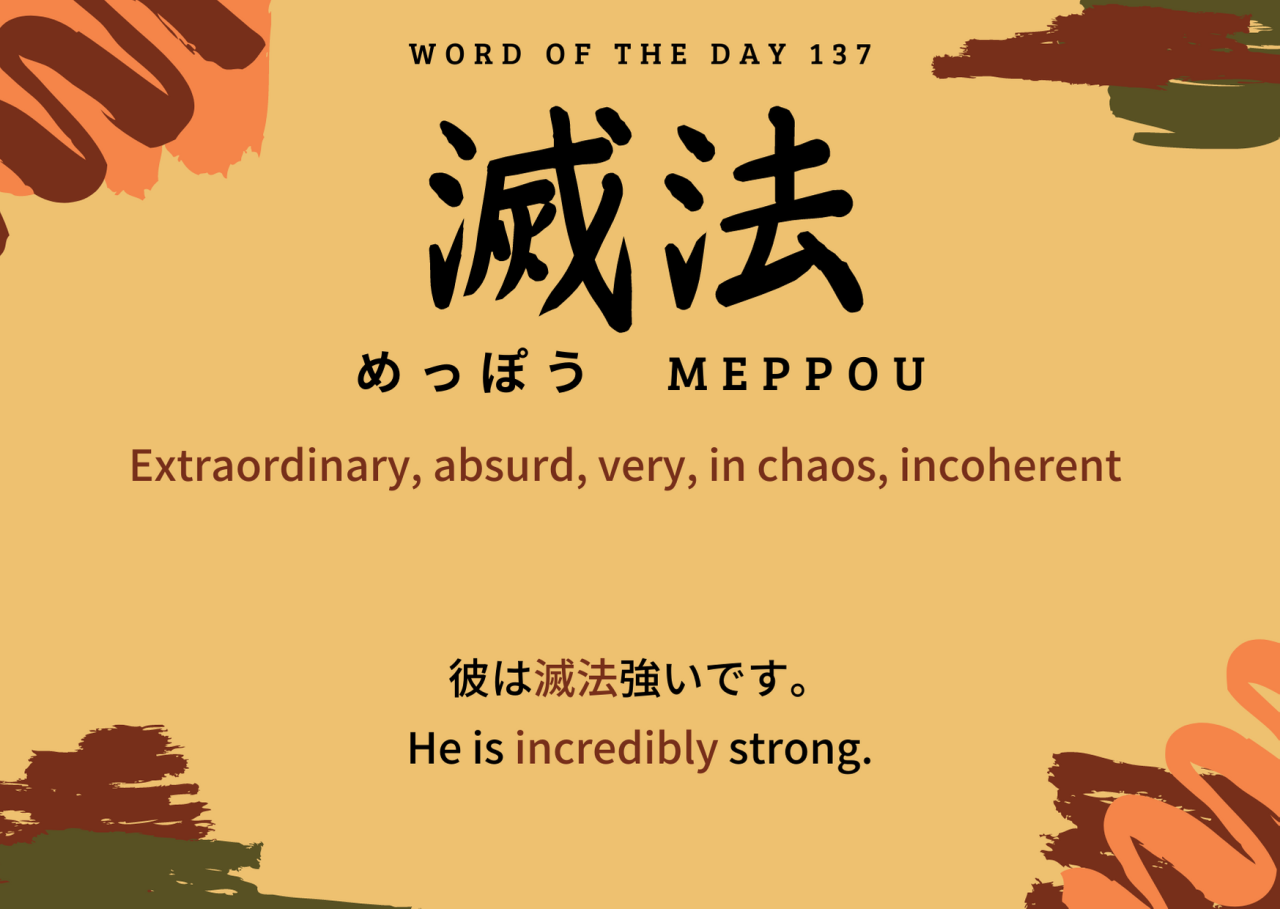JLPT Level: Unlisted, but the kanji are N1 and N3 respectively.Alright, this is a pretty interesting
JLPT Level: Unlisted, but the kanji are N1 and N3 respectively.Alright, this is a pretty interesting word that’s seen some changes in meaning and usage over the centuries. 滅On-yomi: metsuKun-yomi: horo.biru, horo.bu, horo,bosuMeaning: destroy, ruin, overthrow, perish法On-yomi: hou, ha, ho, furanKun-yomi: noriMeaning: method, law, rule, principle, model, systemIf we put the two together, we get “The Law of Destruction,” which could be a pretty rad metal song. Originally, this was a Buddhist term used to refer to…something too hard for me to wrap my pea brain around haha. Really trying to remember everything I learned in that one Buddhist Philosophy course I took in uni back in the day. Okay okay. Basically, all things in existence are divided into two categories: Conditioned existence (a.k.a. things created by fate). This is known as saṃskṛta in Sanskrit.Those that have transcended conditioned existence. This is known as asaṃskṛta in Sanskrit.Meppou is the old Japanese Buddhist term for “things that have transcended conditioned existence.” This can mean that a thing has reached Nirvana, something that is “absolute.” From that meaning, meppou came to mean something “extraordinary” or “terrible and intense” like a historic typhoon. Most of the time, meppou is used in the phrase 滅法強い meppou tsuyoi, “terribly powerful.” -- source link
#japanese#japanese language#study japanese#learn japanese#japanese vocab#japanese vocabulary#study kanji#learn kanji#langblr#studyblr#japanese langblr#japanese studyblr#buddhism#japanese culture#japanese history#jlpt n1#jlpt n3#jlpt kanji#n1 kanji#n3 kanji
